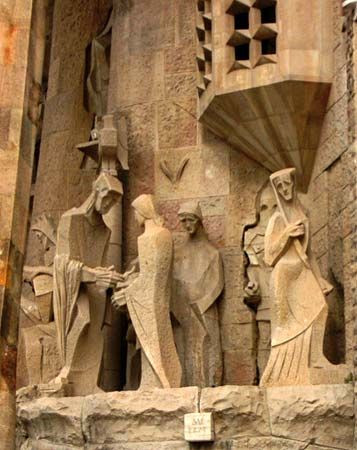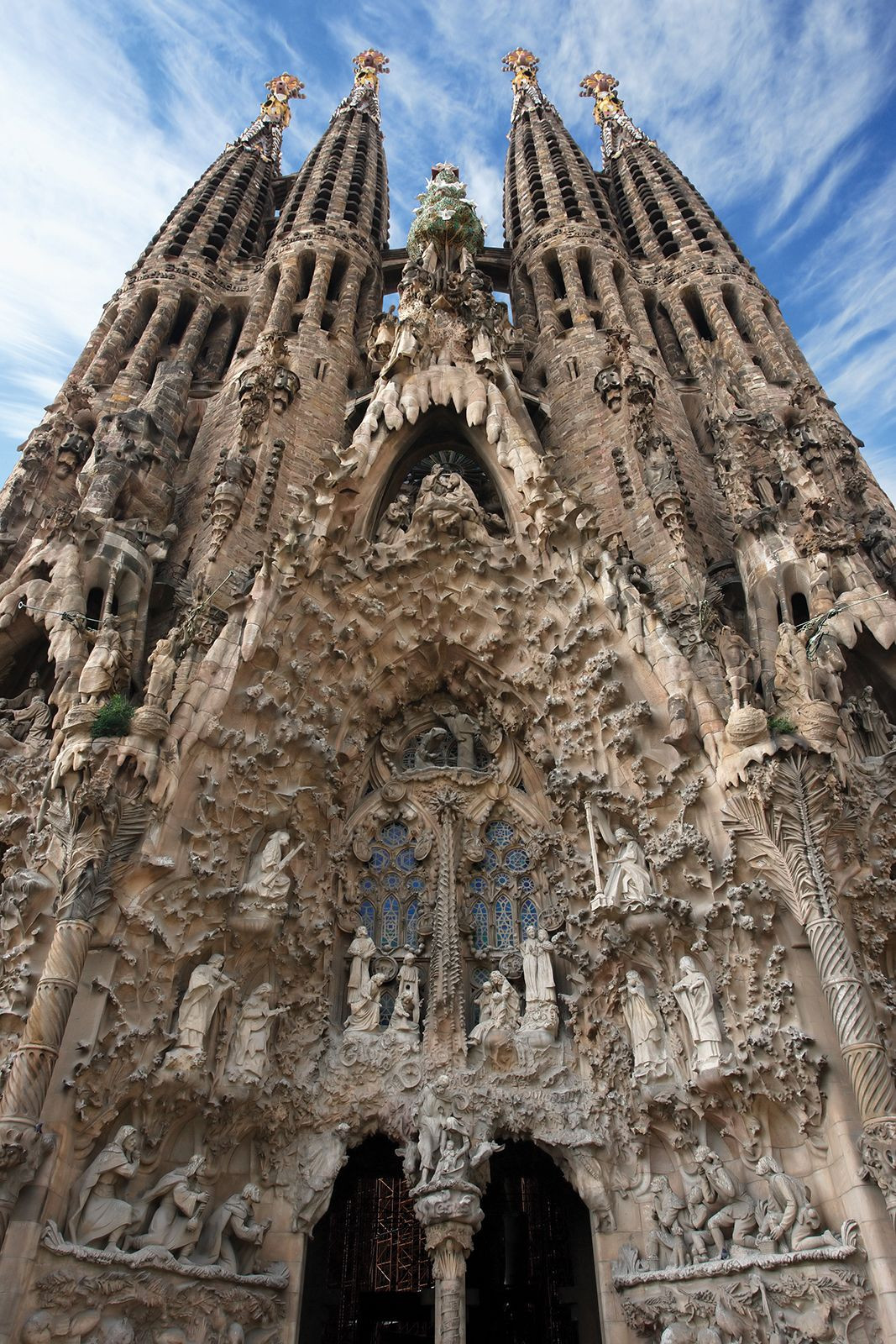The Basílica De La Sagrada Família, a Roman Catholic minor basilica in the heart of Barcelona, Spain, stands as an iconic landmark and a testament to the genius of architect Antoni Gaudí. Construction began in 1882, and remarkably, this ambitious project remains unfinished in the 21st century, making it a captivating blend of history in progress. Renowned for its unique tactile and organic form, the Sagrada Família dramatically punctuates Barcelona’s cityscape with its soaring twisted towers and bold flying buttresses, an unexpected and breathtaking sight in an urban environment.
Originally envisioned by Francisco de Paula del Villar, the project’s funding came from donations aimed at bolstering Christianity in an increasingly secular Barcelona. Antoni Gaudí took over as the chief architect in 1883, transforming the initial Neo-Gothic design into his own revolutionary vision. For Gaudí, the Sagrada Família became a lifelong obsession. He conceived a structure that would stand without traditional internal bracing or external buttresses, a radical departure from architectural norms. His innovative approach resulted in a complex, symbolic forest of helicoidal piers, hyperboloid vaults and sidewalls, all crowned by a hyperbolic paraboloid roof. Gaudí intended the basilica to be his Expressionist interpretation of a 20th-century cathedral, using visual symbolism to articulate the profound mysteries of the Christian faith. His dedication deepened over time, leading him to abandon almost all other work after 1910 and ultimately reside on the construction site, immersing himself entirely in his workshop.
Beyond his religious devotion, Gaudí was deeply involved in the Renaixensa, a Catalan artistic and political revival. This movement sought to revitalize Catalan culture, long suppressed by the Madrid-centered Spanish government. The basílica de la sagrada família became a potent religious symbol for this resurgence of Catalan identity in Barcelona.
 Sculpture of Pontius Pilate on the Passion facade of Basilica of the Sagrada Familia
Sculpture of Pontius Pilate on the Passion facade of Basilica of the Sagrada Familia
Gaudí’s original designs and models, tragically mostly lost during the Spanish Civil War, revealed a colossal structure designed to accommodate approximately 13,000 worshippers. Based on a traditional basilica plan, the Latin cross layout is enclosed on three sides by porticoes. The eastern facade is dedicated to the Nativity, depicting scenes from Jesus’ birth. To the west, the Passion facade portrays the Crucifixion, while the main entrance will boast the Glory facade, illustrating humanity’s path to divine glory. Above, eighteen towering, spindle-shaped towers ascend, each symbolizing significant biblical figures: the twelve Apostles, the four Evangelists, the Virgin Mary, and Jesus Christ, who will be represented by the tallest central tower. Each of the three facades is framed by four bell towers representing the Apostles, with some substitutions to include St. Barnabas, St. Matthias, and St. Paul. The six central towers, honoring Jesus and Mary surrounded by the Evangelists, are designed to serve as lanterns, illuminating the main nave from above.
 The Nativity facade of Sagrada Familia, showcasing Antoni Gaudí's architectural brilliance
The Nativity facade of Sagrada Familia, showcasing Antoni Gaudí's architectural brilliance
At the time of Gaudí’s death in 1926, only the Nativity facade, one bell tower, the apse, and the crypt were complete. His disciple, Domènec Sugranyes, took over the project. Gaudí, buried beneath the basilica, was aware he wouldn’t witness its completion, famously remarking, “The patron of this project is not in a hurry.” UNESCO recognized the significance of Gaudí’s work, designating the Nativity facade and the crypt of the basílica de la sagrada família as a World Heritage site in 1984. In 2010, despite being unfinished, the church was consecrated for religious services and elevated to a minor basilica by Pope Benedict XVI.
Construction has continued since Gaudí’s passing, facing numerous challenges, including interruptions from the Spanish Civil War and the daunting task of working from fragmented and reconstructed designs. While some modern adaptations have faced criticism, progress has been steady. The central nave vaulting was finished in 2000, and covered in 2010. The tower dedicated to the Virgin Mary was inaugurated in 2021, and in 2022, the towers of St. Mark and St. Luke were completed. The remaining towers and the main structure are projected to be completed by 2026, marking the centennial of Gaudí’s death. Upon completion, the basílica de la sagrada família is expected to be the tallest church in the world, a lasting monument to Gaudí’s visionary genius and Barcelona’s enduring spirit.

